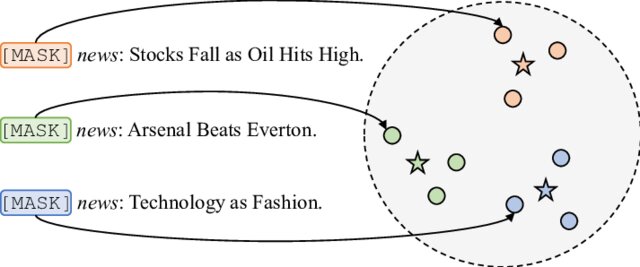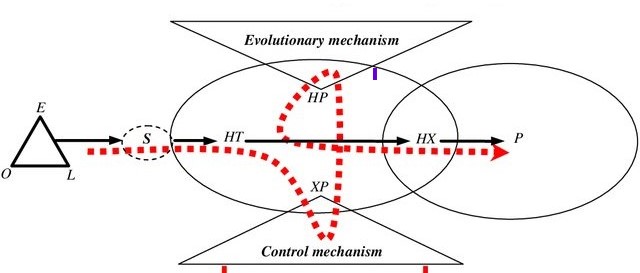Data handling and manipulation with Pandas
What is pandas?
Pandas is python data analysis library which provides integrated and function rich utilities for data handling, wrangling, and analysis of the datasets.
How to install pandas?
# using Miniconda
# to install specific version provide pandas=version number (e.g. pandas=1.0)
conda install pandas
# using pip
pip install pandas
Check pandas version
# you can use interactive python interpreter, jupyter notebook or python code
# I am using interactive python interpreter (Python 3.7)
>>> import pandas as pd
>>> pd.__version__
'0.25.3'
Create dataframe and series using pandas
# you can use interactive python interpreter, jupyter notebook or python code
# I am using interactive python interpreter (Python 3.7)
# create pandas dataframe (two-dimensional)
>>> import pandas as pd
# dataframe from dict
>>> df1 = pd.DataFrame({'col1':['A', 'B', 'C', 'D', 'E'], 'col2':[1,2,3,4,5], 'col3':[0.1,0.2,0.3,0.4,0.5]})
>>> df1
col1 col2 col3
0 A 1 0.1
1 B 2 0.2
2 C 3 0.3
3 D 4 0.4
4 E 5 0.5
# Create a dataframe with some random numbers
>>> import pandas as pd
>>> import numpy as np
>>> df2 = pd.DataFrame(np.random.randint(0,100,size=(1000, 10)), columns=['col%i' % i for i in np.arange(10)])
# print first 5 rows
>>> df2.head()
col0 col1 col2 col3 col4 col5 col6 col7 col8 col9
0 2 72 7 23 82 76 29 86 55 41
1 37 23 73 62 53 70 50 30 5 11
2 38 13 64 54 19 35 93 67 25 13
3 55 58 82 92 35 24 0 57 7 6
4 75 65 82 68 16 49 50 86 52 65
# create pandas series (one-dimensional)
df3 = pd.Series(np.random.randint(0,100, size=10))
>>> df3.head()
0 5
1 37
2 59
3 53
4 37
dtype: int32
Import data from file
# read csv file
>>> import pandas as pd
>>> df4 = pd.read_csv("https://reneshbedre.github.io/assets/posts/volcano/testvolcano.csv")
>>> df4.head()
GeneNames value1 value2 log2FC p-value
0 LOC_Os09g01000.1 8862 32767 -1.886539 1.250000e-55
1 LOC_Os12g42876.1 1099 117 3.231611 1.050000e-55
2 LOC_Os12g42884.2 797 88 3.179004 2.590000e-54
3 LOC_Os03g16920.1 274 7 5.290677 4.690000e-54
4 LOC_Os05g47540.4 308 18 4.096862 2.190000e-54
# read tab file
>>> df5 = pd.read_csv("https://reneshbedre.github.io/assets/posts/anova/onewayanova.txt", sep="\t")
>>> df5.head()
A B C D
0 25 45 30 54
1 30 55 29 60
2 28 29 33 51
3 36 56 37 62
4 29 40 27 73
# make first column of table as index
>>> df6 = pd.read_csv("https://reneshbedre.github.io/assets/posts/volcano/testvolcano.csv", index_col=0)
>>> df6.head()
value1 value2 log2FC p-value
GeneNames
LOC_Os09g01000.1 8862 32767 -1.886539 1.250000e-55
LOC_Os12g42876.1 1099 117 3.231611 1.050000e-55
LOC_Os12g42884.2 797 88 3.179004 2.590000e-54
LOC_Os03g16920.1 274 7 5.290677 4.690000e-54
LOC_Os05g47540.4 308 18 4.096862 2.190000e-54
# import specific columns only
# you can also replace numbers with column names in usecols argument
>>> df7 = pd.read_csv("https://reneshbedre.github.io/assets/posts/volcano/testvolcano.csv", usecols=[0,3,4])
>>> df7.head()
GeneNames log2FC p-value
0 LOC_Os09g01000.1 -1.886539 1.250000e-55
1 LOC_Os12g42876.1 3.231611 1.050000e-55
2 LOC_Os12g42884.2 3.179004 2.590000e-54
3 LOC_Os03g16920.1 5.290677 4.690000e-54
4 LOC_Os05g47540.4 4.096862 2.190000e-54
# skip first n rows
# you can also skip rows from bottom using skipfooter argument
>>> df8 = pd.read_csv("https://reneshbedre.github.io/assets/posts/volcano/testvolcano.csv", index_col=0, skiprows=5, header=None)
>>> df8.head()
1 2 3 4
0
LOC_Os05g47540.4 308 18 4.096862 2.190000e-54
LOC_Os09g00999.1 339 1213 -1.839222 1.950000e-54
LOC_Os01g62900.1 193 4 5.592457 1.560000e-54
LOC_Os09g27030.2 504 162 1.637430 1.360000e-54
LOC_Os01g51410.2 225 22 3.354350 6.760000e-54
# read only first n rows
>>> df9 = pd.read_csv("https://reneshbedre.github.io/assets/posts/volcano/testvolcano.csv", index_col=0, nrows=100)
>>> df9
value1 value2 log2FC p-value
GeneNames
LOC_Os09g01000.1 8862 32767 -1.886539 1.250000e-55
LOC_Os12g42876.1 1099 117 3.231611 1.050000e-55
LOC_Os12g42884.2 797 88 3.179004 2.590000e-54
LOC_Os03g16920.1 274 7 5.290677 4.690000e-54
LOC_Os05g47540.4 308 18 4.096862 2.190000e-54
[100 rows x 4 columns]
# skip comment lines
# below command will skip any lines starting with #
# only one character allowed for comments (# is okay, but ## will not work)
>>> df = pd.read_csv("file.csv", comment='#')
Check data type (dtype)
Check a data type of each column in the dataframe
>>> df1.dtypes
Col1 object
col2 int64
col3 float64
dtype: object
Check dataframe dimensions (size, shape and ndim)
Check the total number of elements, columns, and rows in a dataframe
# get total number of elements in a dataframe
>>> df1.size
15
>>> df2.size
10000
# get number of rows and columns
>>> df1.shape
(5, 3) # (rows, columns)
>>> df2.shape
(1000, 10) # (rows, columns)
# get the array dimensions (number of axes)
# returns 1 for pandas series (one-dimensional) and 2 for dataframes (two-dimensional)
>>> df1.ndim
2
>>> df2.ndim
2
>>> df3.ndim
1
Extracting columns and rows from dataframe
# get column data based on column name
>>> df1['col2']
0 1
1 2
2 3
3 4
4 5
Name: col2, dtype: int64
# get row data based on row index
# return row output will be series
# extract row with index 0
>>> df1.loc[0]
Col1 A
col2 1
col3 0.1
Name: 0, dtype: object
# assign first column (col1) as index
>>> df1_1 = df1.set_index('col1')
>>> df1_1
col2 col3
col1
A 1 0.1
B 2 0.2
C 3 0.3
D 4 0.4
E 5 0.5
# get rows data based on row index (col1 as index)
>>> df1_1.loc['E']
col2 5.0
col3 0.5
Name: E, dtype: float64
Extracting subsets of dataframes
# get subset of dataframe [row, column]
>>> df1_1.loc['A':'C', 'col2':'col3']
col2 col3
col1
A 1 0.1
B 2 0.2
C 3 0.3
# based on default numeric index
>>> df2.loc[5:9, 'col2':'col6']
col2 col3 col4 col5 col6
5 49 5 61 87 23
6 20 57 40 21 17
7 30 30 38 94 50
8 98 17 31 67 59
9 39 9 4 17 8
# get specific columns with all rows
>>> df2[['col1', 'col5', 'col8']]
col1 col5 col8
0 21 2 14
1 93 29 93
2 23 24 32
3 26 72 55
4 17 96 40
# get specific rows with all columns
>>> df2[2:6]
col0 col1 col2 col3 col4 col5 col6 col7 col8 col9
2 4 23 64 49 71 24 97 92 32 39
3 73 26 33 99 62 72 73 3 55 82
4 72 17 73 71 42 96 56 29 40 96
5 16 10 49 5 61 87 23 7 36 1
# get specific columns with specific rows
>>> df2.loc[2:4, ['col1', 'col5', 'col8']]
Extracting rows and columns based on conditional match
import pandas as pd
# dataframe from dict
df = pd.DataFrame({'col1':['A', 'A', 'C', 'D', 'E'], 'col2':[1,2,3,4,5], 'col3':[0.1,0.2,0.3,0.4,0.5]})
df
# output
col1 col2 col3
0 A 1 0.1
1 A 2 0.2
2 C 3 0.3
3 D 4 0.4
4 E 5 0.5
# extract rows where col1 has values A
df.loc[df['col1'] == 'A']
# output
col1 col2 col3
0 A 1 0.1
1 A 2 0.2
# extract rows where col1 has values A and D
df.loc[df['col1'].isin(['A', 'D'])]
# output
col1 col2 col3
0 A 1 0.1
1 A 2 0.2
3 D 4 0.4
Statistics of dataframes
# check above to create dataframe objects (df1, df2 and df1_1)
# get descriptive statistics (count, mean, std dev, min, max, and quartiles)
# it excludes all NaN or missing values
>>> df1.describe()
col2 col3
count 5.000000 5.000000
mean 3.000000 0.300000
std 1.581139 0.158114
min 1.000000 0.100000
25% 2.000000 0.200000
50% 3.000000 0.300000
75% 4.000000 0.400000
max 5.000000 0.500000
# get only certain element like mean ,count
# get mean
>>> df1.describe().loc['mean']
col2 3.0
col3 0.3
Name: mean, dtype: float64
# get mean and std dev
>>> df1.describe().loc[['mean', 'std']]
col2 col3
mean 3.000000 0.300000
std 1.581139 0.158114
# get standard error of mean (sem)
>>> df1.sem()
col2 0.707107
col3 0.070711
dtype: float64
# for specific columns only
>>> df2['col4'].describe()
count 1000.000000
mean 48.917000
std 28.679865
min 0.000000
25% 25.000000
50% 49.000000
75% 74.000000
max 99.000000
Name: col4, dtype: float64
# for only selected multiple columns
>>> df2.loc[:,'col1':'col5'].describe()
col1 col2 col3 col4 col5
count 1000.000000 1000.000000 1000.000000 1000.000000 1000.000000
mean 49.334000 51.057000 48.676000 48.917000 48.486000
std 28.311375 29.141293 28.252065 28.679865 29.070619
min 0.000000 0.000000 0.000000 0.000000 0.000000
25% 25.000000 26.000000 25.000000 25.000000 22.000000
50% 50.000000 52.000000 49.000000 49.000000 50.000000
75% 73.000000 77.000000 73.000000 74.000000 73.000000
max 99.000000 99.000000 99.000000 99.000000 99.000000
# to get descriptive statistics by row-wise you can transpose the columns
# or use apply function
>>> df1_1.apply(pd.DataFrame.describe, axis=1)
count mean std min 25% 50% 75% max
col1
A 2.0 0.55 0.636396 0.1 0.325 0.55 0.775 1.0
B 2.0 1.10 1.272792 0.2 0.650 1.10 1.550 2.0
C 2.0 1.65 1.909188 0.3 0.975 1.65 2.325 3.0
D 2.0 2.20 2.545584 0.4 1.300 2.20 3.100 4.0
E 2.0 2.75 3.181981 0.5 1.625 2.75 3.875 5.0
# to get descriptive statistics by row-wise but only for specific columns
>> df2.loc[:,'col0':'col4'].apply(pd.DataFrame.describe, axis=1)
count mean std min 25% 50% 75% max
0 5.0 43.8 37.325594 12.0 12.0 30.0 69.0 96.0
1 5.0 52.8 34.687173 1.0 43.0 55.0 71.0 94.0
2 5.0 61.6 36.287739 14.0 34.0 72.0 90.0 98.0
3 5.0 70.0 32.992423 21.0 52.0 83.0 96.0 98.0
4 5.0 43.4 34.681407 3.0 9.0 59.0 73.0 73.0
..
Add/Insert rows and columns to existing dataframes
# check above to create dataframe objects (df1, df2 and df1_1)
# add extra row to existing df1 dataframe
>>>df1_2 = df1.append({'col1': 'F', 'col2': 6, 'col3': 0.6}, ignore_index=True)
# ignore_index option will ignore the current index and append to df1
# dataframe.This option is useful when appending two dataframe and to
# preserve the original index of each dataframes
>>> df1_2
col1 col2 col3
0 A 1 0.1
1 B 2 0.2
2 C 3 0.3
3 D 4 0.4
4 E 5 0.5
5 F 6 0.6
# adding a column to dataframe
>>> df1_2['col4'] = [1, 4, 9, 16, 25,36]
>>> df1_2
col1 col2 col3 col4
0 A 1 0.1 1
1 B 2 0.2 4
2 C 3 0.3 9
3 D 4 0.4 16
4 E 5 0.5 25
5 F 6 0.6 36
# merge/append two dataframes
# create a new dataframe
>>> df10 = pd.DataFrame({'col1':['X', 'Y'], 'col2':[7,8], 'col3':[0.7,0.8]})
>>> df10
col1 col2 col3
0 X 7 0.7
1 Y 8 0.8
# mereg df10 with df1_2
>>> df1_2.append(df10)
col1 col2 col3 col4
0 A 1 0.1 1.0
1 B 2 0.2 4.0
2 C 3 0.3 9.0
3 D 4 0.4 16.0
4 E 5 0.5 25.0
5 F 6 0.6 36.0
0 X 7 0.7 NaN
1 Y 8 0.8 NaN
# if you set ignore_index=True, the index order will not be preserved
>>> df1_2.append(df10, ignore_index=True)
col1 col2 col3 col4
0 A 1 0.1 1.0
1 B 2 0.2 4.0
2 C 3 0.3 9.0
3 D 4 0.4 16.0
4 E 5 0.5 25.0
5 F 6 0.6 36.0
6 X 7 0.7 NaN
7 Y 8 0.8 NaN
Export dataframes to file
# check above to create dataframe objects (df1)
# Export to CSV file
# with first column as index
>>> df1.to_csv("df1.csv")
# do not export index as first column
>>> df1.to_csv("df1.csv", index=False)
# Export to TAB file
>>> df1.to_csv("df1.csv", sep='\t')
# no column headers
>>> df1.to_csv("df1.csv", header=False)
# compress output file (works with pandas 1.0.0)
>>> df1.to_csv("df1.zip", compression={'method':'zip', 'archive_name':'df1.csv'})
# export to excel file
# use similar option as above for headers and index
>>> df1.to_excel("df1.xlsx")
Convert series to dataframes
# create pandas series
>>> df11 = pd.Series([1,2,3])
>>> df11
0 1
1 2
2 3
dtype: int64
# convert to dataframe
>>> df11.to_frame()
0
0 1
1 2
2 3
# add column name
>>> df11.to_frame('col1')
col1
0 1
1 2
2 3
Convert numpy arrays to dataframes
>>> import numpy as np
>>> x = np.array([[ 1, 2], [ 3 ,4]])
# convert to dataframe
df12 = pd.DataFrame({'col1':x[:,0], 'col2':x[:,1]})
>>> df12
col1 col2
0 1 2
1 3 4
Convert dataframe to numpy arrays
# see df12 dataframe in above section
# convert whole dataframe to numpy array
>>> df12.to_numpy()
array([[1, 2],
[3, 4]])
# extract specific column as numpy array
>>> df12['col1'].to_numpy()
array([1, 3])
# extract multiple columns as numpy array
>>> df12[['col1','col2']].to_numpy()
array([[1, 2],
[3, 4]])
# extract specific row as numpy array
>>> df12.loc[0].to_numpy()
array([1, 2])
# extract multiple row as numpy array
>>> df12.loc[0:1].to_numpy()
array([[1, 2],
[3, 4]])
Find min and max values in dataframe
Create a dataframe with some random numbers
>>> import pandas as pd
>>> import numpy as np
>>> df = pd.read_csv("https://reneshbedre.github.io/assets/posts/anova/onewayanova.txt", sep="\t")
>>> df.head()
A B C D
0 25 45 30 54
1 30 55 29 60
2 28 29 33 51
3 36 56 37 62
4 29 40 27 73
# find min in every column
>>> df.min()
A 25
B 29
C 27
D 51
dtype: int64
# find max in every column
>>> df.max()
A 36
B 56
C 37
D 73
dtype: int64
# find min and max in every rows
>>> df.min(axis=1)
>>> df.max(axis=1)
# find max and min from whole dataframe
>>> np.min(df.min().to_numpy())
25
>>> np.max(df.max().to_numpy())
73
# find min and max in particular columns or rows
# max in column A
>>> df['A'].max()
36
# max in row 2
>>> df.loc[1].max()
60
# multiple columns
>>> df[['A', 'D']].max()
A 36
D 73
dtype: int64
# multiple rows (0 and 1 row)
>>> df.loc[0:1,].max(axis=1)
0 54
1 60
dtype: int64
# get row index of max and min values for each column
>>> df.idxmax()
A 3
B 3
C 3
D 4
dtype: int64
# for min df.idxmin()
# to skip missing values (NaN), default skipna is True
# to not to skip missing values add skipna=False
>>> df.min(skipna=True)
Modifying dataframe columns and column names
import pandas as pd
df = pd.read_csv("https://reneshbedre.github.io/assets/posts/anova/onewayanova.txt", sep="\t")
df.head()
A B C D
0 25 45 30 54
1 30 55 29 60
2 28 29 33 51
3 36 56 37 62
4 29 40 27 73
# check column names
df.columns
Index(['A', 'B', 'C', 'D'], dtype='object')
# change column names
df.columns = ['A1', 'B1', 'C1', 'D1']
df.head()
A1 B1 C1 D1
0 25 45 30 54
1 30 55 29 60
2 28 29 33 51
3 36 56 37 62
4 29 40 27 73
# reorder column names
df1 = df[['B1', 'A1', 'C1', 'D1']]
# alternate way: df1 = df.reindex(columns=['B1', 'A1', 'C1', 'D1'])
df1
B1 A1 C1 D1
0 45 25 30 54
1 55 30 29 60
2 29 28 33 51
3 56 36 37 62
4 40 29 27 73
# add new column
df['E']=[55,58,61,70,85]
df.head()
A1 B1 C1 D1 E
0 25 45 30 54 55
1 30 55 29 60 58
2 28 29 33 51 61
3 36 56 37 62 70
4 29 40 27 73 85
# drop column D1 and E
# axis=1 refers to column labels (use 0 for index labels)
df.drop(['D1', 'E'], axis=1)
A1 B1 C1
0 25 45 30
1 30 55 29
2 28 29 33
3 36 56 37
4 29 40 27
# rename specific columns
df.rename(columns={"A1": "a1", "B1": "b1"})
a1 b1 C1 D1 E
0 25 45 30 54 55
1 30 55 29 60 58
2 28 29 33 51 61
3 36 56 37 62 70
4 29 40 27 73 85
join two dataframes (left, right, outer and inner joins)
>>> import pandas as pd
>>> df1 = pd.DataFrame({'col1':['A', 'B', 'C', 'D', 'E', 'F', 'I'], 'col2':[1,2,3,4,5,6,8] })
>>> df1
col1 col2
0 A 1
1 B 2
2 C 3
3 D 4
4 E 5
5 F 6
6 I 8
>>> df2 = pd.DataFrame({'col1':['A', 'B', 'C', 'D', 'E', 'G'], 'col3':[0.1,0.2,0.3,0.4,0.5,0.7] })
>>> df2
col1 col3
0 A 0.1
1 B 0.2
2 C 0.3
3 D 0.4
4 E 0.5
5 G 0.7
# left join df1 and df2 (join based on all keys from df1)
>>> df_left_joined = pd.merge(df1, df2, how='left', on='col1')
>>> df_left_joined
col1 col2 col3
0 A 1 0.1
1 B 2 0.2
2 C 3 0.3
3 D 4 0.4
4 E 5 0.5
5 F 6 NaN
6 I 8 NaN
# right join df1 and df2 (join based on all keys from df2)
>>> df_right_joined = pd.merge(df1, df2, how='right', on='col1')
>>> df_right_joined
col1 col2 col3
0 A 1.0 0.1
1 B 2.0 0.2
2 C 3.0 0.3
3 D 4.0 0.4
4 E 5.0 0.5
5 G NaN 0.7
# outer join df1 and df2 (join based on union of keys of df1 and df2)
>>> df_outer_joined = pd.merge(df1, df2, how='outer', on='col1')
>>> df_outer_joined
col1 col2 col3
0 A 1.0 0.1
1 B 2.0 0.2
2 C 3.0 0.3
3 D 4.0 0.4
4 E 5.0 0.5
5 F 6.0 NaN
6 I 8.0 NaN
7 G NaN 0.7
# inner join df1 and df2 (join based on common keys of df1 and df2)
>>> df_inner_joined = pd.merge(df1, df2, how='inner', on='col1')
>>> df_inner_joined
col1 col2 col3
0 A 1 0.1
1 B 2 0.2
2 C 3 0.3
3 D 4 0.4
4 E 5 0.5
Correlation analysis with pandas dataframe
>>> import pandas as pd
>>> df = pd.read_csv("https://reneshbedre.github.io/assets/posts/anova/onewayanova.txt", sep="\t")
>>> df.head()
A B C D
0 25 45 30 54
1 30 55 29 60
2 28 29 33 51
3 36 56 37 62
4 29 40 27 73
# perform pearson correlation analysis
# check more methods at https://pandas.pydata.org/pandas-docs/stable/reference/api/pandas.DataFrame.corr.html
# returns correlation coefficient matrix
>>> df.corr(method='pearson')
A B C D
A 1.000000 0.569327 0.657544 0.341802
B 0.569327 1.000000 0.194615 0.264710
C 0.657544 0.194615 1.000000 -0.391609
D 0.341802 0.264710 -0.391609 1.000000
Compare all rows or columns
>>> import pandas as pd
>>> df = pd.DataFrame({'col1':['0', '0', '0' ], 'col2':[0,2,3], 'col3':[0,0.2,0.3]})
>>> df
col1 col2 col3
0 0 0 0.0
1 0 2 0.2
2 0 3 0.3
# delete all rows where all columns are zero
>>> df[(df!=0).all(axis=1)]
col1 col2 col3
1 0 2 0.2
2 0 3 0.3
# get all rows where columns sum > 3
>>> df[(df.sum(axis=1)>3)]
col1 col2 col3
2 0 3 0.3
Last updated: November 09, 2020




